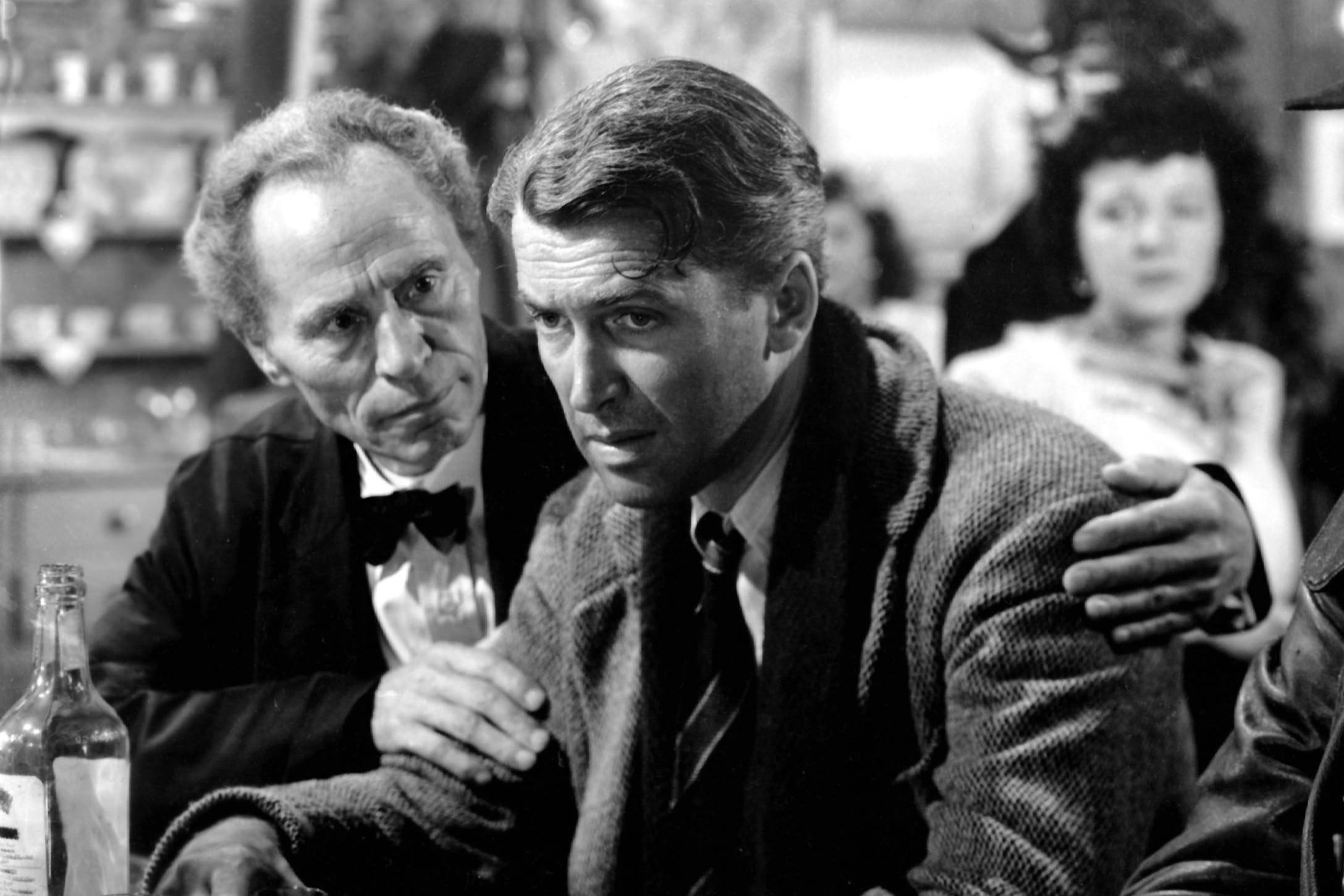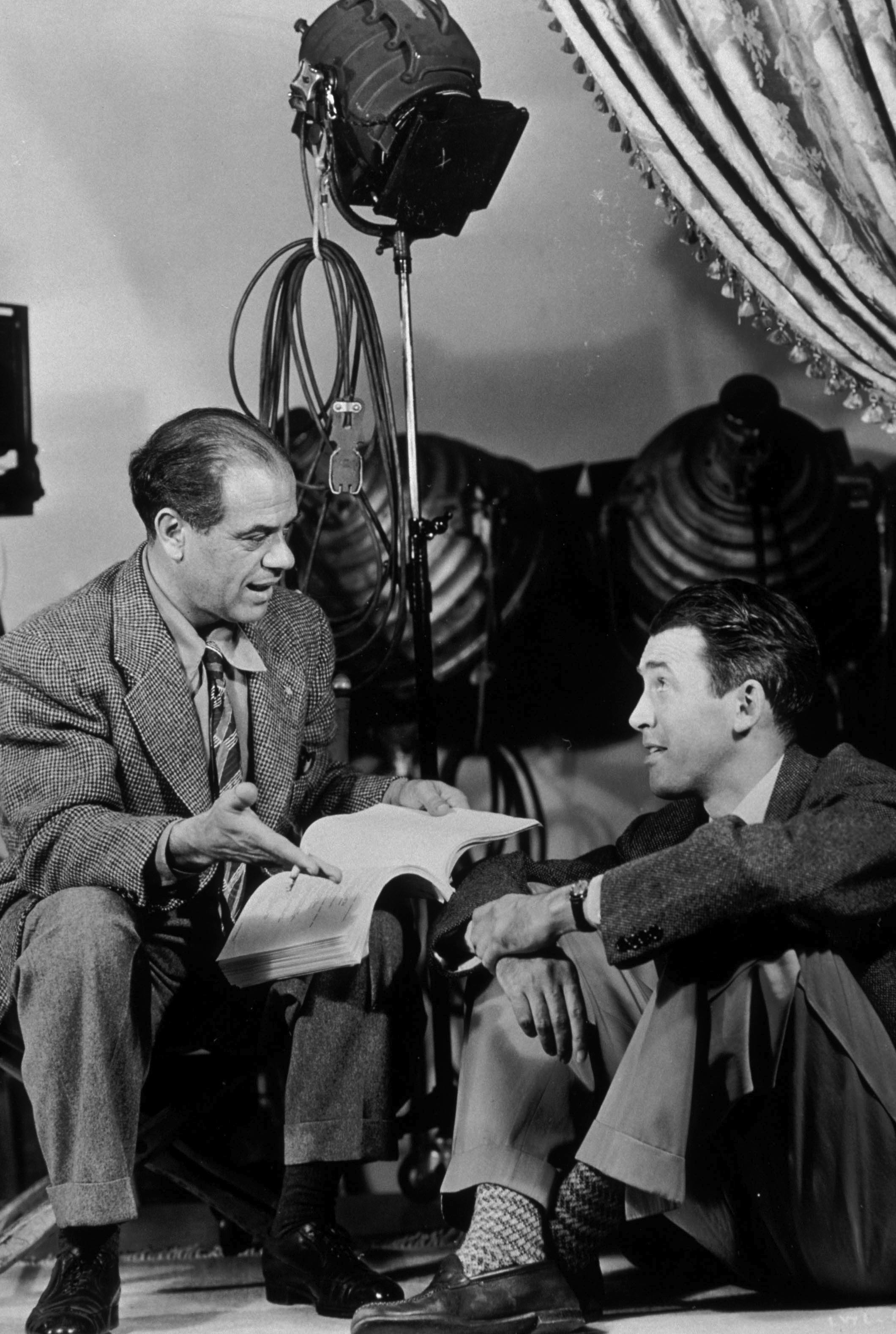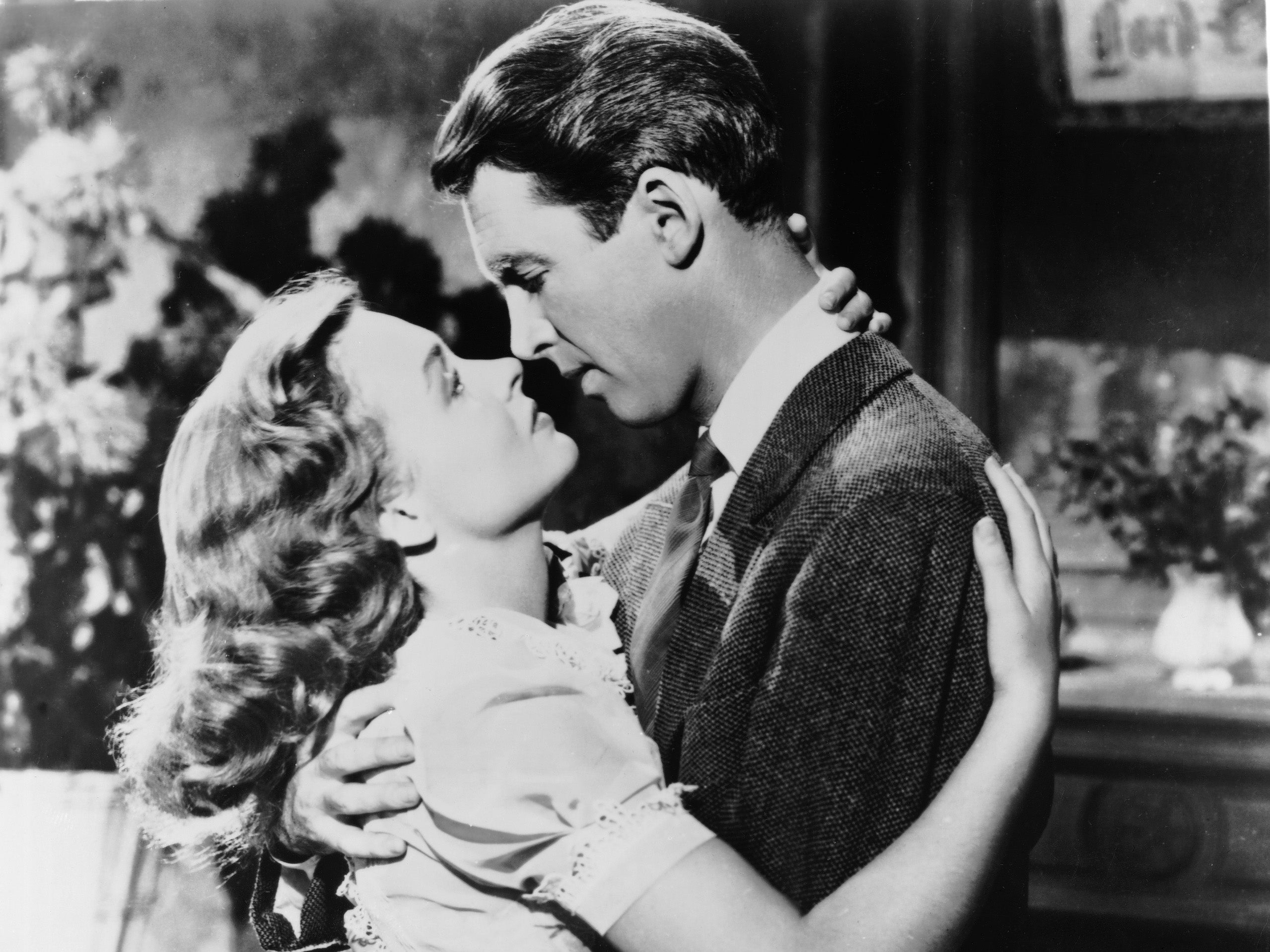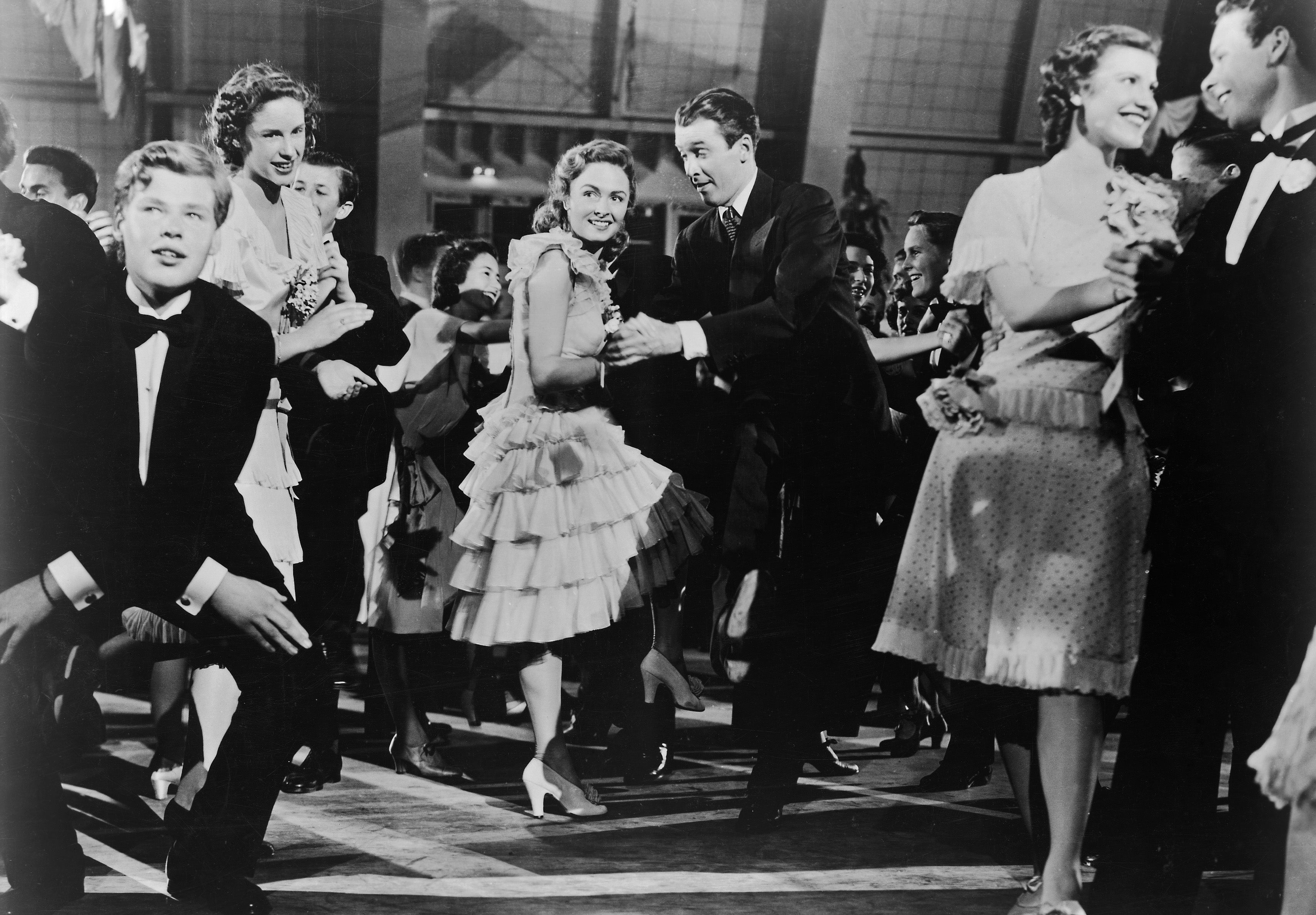Not such a wonderful life: The grim backstory behind the feelgood Christmas classic
Frank Capra’s eternal Christmas fable ‘It’s a Wonderful Life’ has come to embody seasonal warmth and goodwill in the hearts of millions. Behind the scenes, though, things were rather less heavenly, writes Louis Chilton


There’s nothing quite like It’s a Wonderful Life. The beloved 1946 Christmas film, in which James Stewart plays a despairing man who is shown what the world would look like if he’d never been born, is, to many of us, as treasured and essential a part of the festive period as Santa Claus himself.
Yet like so many of the best Christmas stories – including this film’s key antecedent, Charles Dickens’s A Christmas Carol – It’s a Wonderful Life is more than just mistletoe and good cheer. In fact, it’s made richer and more moving by its inherent darkness. Its reputation among sceptics for being rose-tinted schmaltz belies the fact that this a film about a man pushed to the brink of suicide.
Behind the scenes, the story was just as complex. The making of the festive classic is explored in a new book, It’s a Wonderful Life (BFI Film Classics) by Michael Newton. Those hoping that the warm, humanistic charm of Stewart’s George Bailey was the sign of a fuzzy and benevolent production, however, will be sorely disappointed.
Despite his reputation for mawkish sentiment, the real Capra was no naif. The recent biographical documentary Frank Capra: Mr America paints a complicated, often damning portrait of the man behind feelgood classics such as Mr Smith Goes to Washington and It Happened One Night. Capra’s life was marked by early tragedy: his father died in 1916 when he was cut in half by a mechanical saw, and Capra had a difficult relationship with his mother, who used to beat him. A bout of “Spanish flu” left its mark on the filmmaker, as did his time in the military. In 1938, just a few years before he would make It’s a Wonderful Life, Capra lost one of his children, Johnny, at the age of just three.
Stewart, too, arrived on set hauling his own psychological baggage, having just returned from military service deeply affected by his experience. The film was billed as a comeback for the Philadelphia Story star, whose career was in need of a goosing. Stewart ended up giving what might be his defining performance, the purest distillation of the kind of “aw, shucks” American decency that he would come to embody in the popular imagination (and, in later projects, subvert). During production, however, he was wracked with anxiety.
While Capra eventually ended up embracing the film as his personal favourite, It’s a Wonderful Life got off to a rocky start. (The director reportedly once described the in-vitro project as “the lousiest piece of s*** I’ve ever heard”.) The film was adapted loosely from a 1943 short story by Philip Van Doren Stern, titled “The Greatest Gift”. Several noteworthy writers tried and failed to adapt it successfully – namely Dalton Trumbo, Clifford Odets and Marc Connelly – with Cary Grant initially attached to star. Once Capra became involved, the writing duties were passed to Frances Goodrich and Albert Hackett, the husband-and-wife screenwriting duo known as the Hacketts.

While the Hacketts had entered into the project with a deep underlying admiration for Capra, they soon found themselves at odds with the filmmaker after he brought in another writer, Jo Swerling, to retool the script. (Their relationship was also reportedly further damaged when Capra directed a condescending remark towards Goodrich during one meeting.) The couple didn’t mince their words in later interviews, characterising the director as a “horrid man” and “a very arrogant son of a bitch”, adding that the film was “the only unpleasant [writing] experience we’ve ever had.”
The Hacketts weren’t alone in falling out with Capra. Swerling too clashed with him over screenplay credits and creative decisions; eventually, he broke off all contact with the director. The film’s music composer Dimitri Tiomkin also ran afoul of Capra’s decision-making, walking away from the project soured.
Capra biographer Joseph McBride wrote that it was the filmmaker’s dysfunctional relationship with other writers that would prove his undoing, “His need to be recognised as a writer himself would make it increasingly difficult for him to work with first-rate writers, finally throwing him back on his own limited resources.”

Watch Apple TV+ free for 7 day
New subscribers only. £8.99/mo. after free trial. Plan auto-renews until cancelled.
ADVERTISEMENT. If you sign up to this service we will earn commission. This revenue helps to fund journalism across The Independent.

Watch Apple TV+ free for 7 day
New subscribers only. £8.99/mo. after free trial. Plan auto-renews until cancelled.
ADVERTISEMENT. If you sign up to this service we will earn commission. This revenue helps to fund journalism across The Independent.

Filming itself was similarly fraught. Capra later admitted in his autobiography that he faced “extreme loneliness” while making It’s a Wonderful Life, and found himself “laced with the fear of failure”. (Elsewhere, however, he did liken the shooting schedule to a “four-month non-stop orgasm”). Capra parted ways with his director of photography Victor Milner after just five weeks of filming (though he was paid for 20), having grown frustrated with the cameraman’s working methods. In his stead, he hired Joseph Walker, a frequent collaborator from Capra’s previous projects. Recalling his time working on the film, Walker later described Capra as having been “tentative and unhappy” on set.
The film has faced criticism from modern audiences, particularly over its depiction of Mary, George Bailey’s wife, played by Donna Reed – who, in the vision of a George-less reality, becomes an “old maid” (the horror!). Capra had been contrite about her character’s perceived shortcomings, but others have seen merit in Reed’s character: a recent well-argued essay by Clare Coffey disputes the so-called Mary problem. There is, it’s averred, a case for Mary being a great and misunderstood figure, whose agency has often been overlooked.

The character of Annie, the Bailey family’s African-American maid, is another focus of criticism, embodying a range of then-common cinematic stereotypes around Black roles. While Annie isn’t so bluntly offensive as to render the film a shunned relic (in the manner of, say, Gone with the Wind), it remains a dubious reminder of America’s overtly racist past. Although It’s a Wonderful Life was in many ways a deeply progressive, compassionate and anti-capitalist piece of work, it was not immune to the pervasive racial biases of the time.
Ultimately, Capra’s fears of failure manifested – commercially, if not creatively. Contrary to popular belief, the film was not an abject box office flop, but it did fail to turn a profit on its production budget – which had, over the course of filming, ballooned to what was in those days an unwieldy $3m. Liberty Films, the production company co-founded by Capra in 1945, went out of business after just one more release (Capra’s 1948 drama State of the Union). As is noted in the BFI Classics book, Capra was left to contend with feelings of defeat after It’s a Wonderful Life’s release, and his career entered a downturn from which it would never recover.
There may be some irony, or perhaps just a kind of cosmic aptness, in the arc of It’s a Wonderful Life. This was a fable about a man unhappy with his lot in life, struggling with fears of inadequacy, unaware of his own social impact. The film itself was regarded as a failure – only to be later embraced by the world (after years of seasonal TV airings) as a bastion of profound joy and comfort. What would the world look like if It’s a Wonderful Life had never been made? I don’t think any of us want to find out.
‘It’s a Wonderful Life (BFI Film Classics)’ is out now
Join our commenting forum
Join thought-provoking conversations, follow other Independent readers and see their replies
Comments